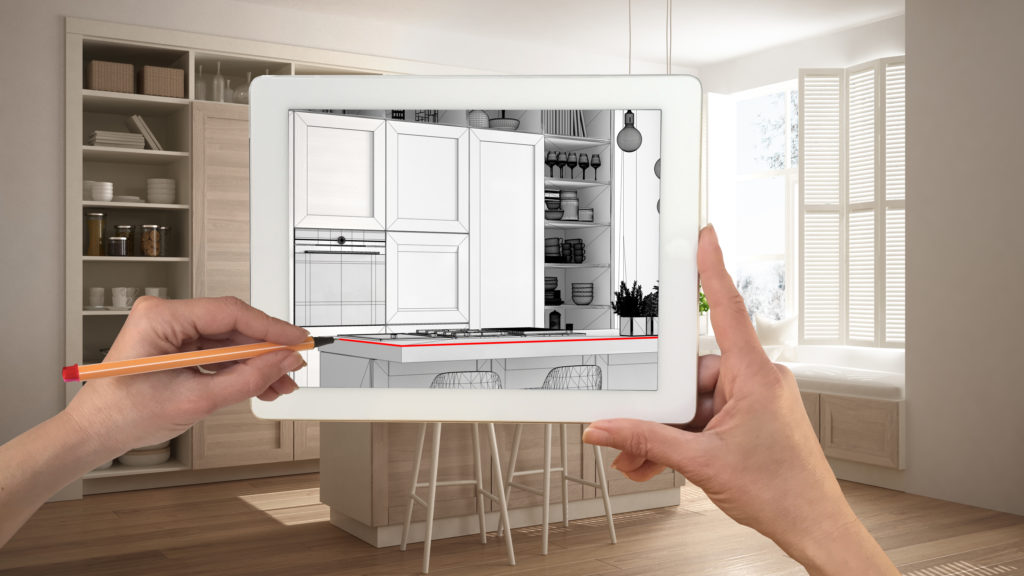You are viewing our site as an Agent, Switch Your View:
Agent | Broker Reset Filters to Default Back to ListEnhancing Photos and Virtual Staging: Know the Rules
November 11 2019
 Did you know that enhancing a listing photo could be a violation of your local MLS rules? It could be if you run afoul of your local MLS guidelines. There's another catch: the rules surrounding enhancing photos and using photos are unique to each MLS.
Did you know that enhancing a listing photo could be a violation of your local MLS rules? It could be if you run afoul of your local MLS guidelines. There's another catch: the rules surrounding enhancing photos and using photos are unique to each MLS.
Knowing your local MLS guidelines about listing photos "dos and don'ts" is essential, especially if you are uploading images that use virtual staging technology.
What is virtual staging? It's a photo editing service that can fill photographs of empty rooms of a home listed for sale by inserting realistic furnishings and flooring into the images. Like standard staging, which uses physical furnishings, virtual staging uses advanced technology to help buyers visualize what the home could look like fully furnished.
We already know how staging works. According to the National Association of Realtors, 83 percent of buyers' agents said staging a home made it easier for a buyer to visualize the property as a future home. Since 90 percent of all home shoppers start their buying journey on the web, photos are essential for every listing.
New technology lowers the cost
The main attractiveness of virtual staging is the cost. A standard home staging service over the life of the listing may cost as much as $5,000 or more. Using a leading virtual staging service like BoxBrownie, VHT Studios, or PadStyler can cost about $30 for each image. For most listings, the investment could be a one-time fee of $500 or less.
But there are new risks that come with using virtually staged photos. Because the photograph has been enhanced, this triggers the rule your MLS may have about the use of rendered photos, or more specifically, virtual staging images.
Know your MLS rules
Most MLSs permit the use of virtually staged photos, using either a photo with replaced furnishings or an image of an empty room that is then digitally furnished. Stellar MLS, which allows both, created an excellent visual graphic for its members to understand what is permitted and what is not.
Stellar MLS guidelines are typical among MLSs that permit virtual. While Stellar allows modifications of "existing furniture and décor in a room" as well as adding "virtual furniture, décor, and artwork to an empty room," there are some big no-nos.
Stellar MLS warns you can't:
- Cover-up eyesores like holes in a wall or exposed wiring
- Upgrade damaged and/or outdated flooring
- Add or enhance scenic views and/or windows that do not currently exist
- Make a room appear larger or smaller than what it truly is
- Change paint color of the wall
- Swap out those dated kitchen countertops for chic granite
- Use photos of the exterior of the property that are virtually staged, except for virtual furnishings on attached structures like a deck or pool area
Most importantly, Stellar has created additional, specific rules for virtual staging. All virtually staged listing photos and listings MUST:
- Have the appropriate watermark that Stellar MLS provides
- Bear the exact phrase "virtually staged" in the public remarks
The Miami Realtors even provides its members with access to a preferred virtual staging vendor, PadStyler, with discounts for its members.
But not all MLSs allow virtual staging. For example, the Dallas-Ft. Worth MLS, NTREIS | North Texas Real Estate Information Systems, Inc., prohibits photos that have been "embellished" to listings. Their rules specifically say:
"Only a true current photograph of Listed Property may be placed in the 'Property Photograph' section without decorative borders, other embellishments, or any digitally enhanced modifications that would misrepresent the true condition or appearance of the property. Notwithstanding the foregoing, only properties listed as incomplete construction may have a representative photo of the proposed house."
Other leading MLSs like Chicago-based MRED and the Houston Association of Realtors emphasize accuracy in their guidelines. HAR's rule about virtual listings says:
Digital images shall not contain digitally enhanced modifications that alter or misrepresent the condition or appearance of the listed property's structure or grounds (e.g. adding a swimming pool or landscaping, changing the color of a wall). Digital images may include the use of virtual staging, which is limited to the addition of furnishings and wall décor that would otherwise be considered personal property and not conveyed in the sale of the property. Participants shall clearly indicate in the Photo Description the image has been virtually staged.
But the biggest challenge with virtual staging, agents will admit, is making sure the photos meet buyer's expectations. If home shoppers come to a house based on virtually staged photos and instantly react negatively because of mismatched expectations, it doesn't benefit anyone.
Disclosure and accuracy are the keys
The two guidelines common to MLSs that permit virtual staging are disclosure and accuracy. The Golden Rule for virtual staging may be best expressed in Article 12 of NAR's Code of Ethics. It requires agents and brokers to "present a true picture in their advertising, marketing, and other representations."
If you keep this in mind when enhancing any photo, you are more likely to meet a buyer's expectations and still help accelerate the sale of your listing.
To view the original article, visit the Tech Helpline blog.









